
How to make a micro flat liveable with shape-shifting furniture – turn your home office into a bedroom at the touch of a button
Multifunctional furniture systems combine clever, space-saving designs with automation to create rooms that can change according to need – ideal for the micro-apartments that are spreading in Hong Kong and other urban centres
“Alexa, it’s sleep time.” In the not-too-distant future, that could be the cue for your office to disappear and your bed to take its place. With apartment sizes getting ever smaller, some designers are using technology to transform the way we live, while others are coming up with multifunctional furniture to shape-shift our worlds.
The United Nations projects that another 2.5 billion people will be living in urban areas by 2050 – or 68 per cent of the world’s population, up from 55 per cent today – with Asia and Africa accounting for 90 per cent of this increase. Already, cities such as Hong Kong pack people in tightly; units in a residential block currently planned for Sham Shui Po, an area in Kowloon, will have usable space of just 123 square feet (11.4 square metres) – smaller than a standard 20-foot-long shipping container or a typical American parking space.
A coffee table that doubles as an exercise bench? Hong Kong fitness furniture line
Design could be the saviour of occupants in such nano-apartments. Take the Ori system created by the Massachusetts Institute of Technology (MIT) with design luminary Yves Behar. Like a Swiss Army Knife, the system, enabled by technology, accommodates living space, a bedroom, wardrobe and home office in an apartment of 200 to 300 square feet.

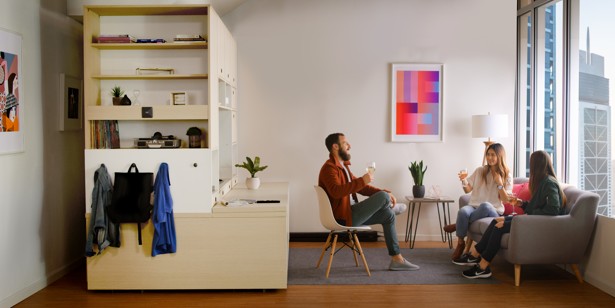
By physically transforming the flat’s interior to create the environment needed at the time, this system of robotic furniture, now in production in the US, “provides the experience of luxury living, without the luxury of size”, Behar says.
Ask Alexa to make my bedroom, and the system moves automatically to the preset location
Behar’s company, Fuseproject, created everything from the furniture design to the name of the system, which borrows from the Japanese word origami – meaning, literally, to fold (“oru”) paper (“kami”). MIT’s team had the technology – actuators, electronics and software – to glide heavy furniture and connect it to other smart devices.
“Our goal was to find a single-unit scenario that would maximise the value of a micro studio or one-bedroom apartment,” Behar says. “The unit had to be flexible for both the developer and end user, with modular features based on spatial volume. More important, it had to solve the problems inherent to micro-living, such as maximising storage space and minimising clutter.”
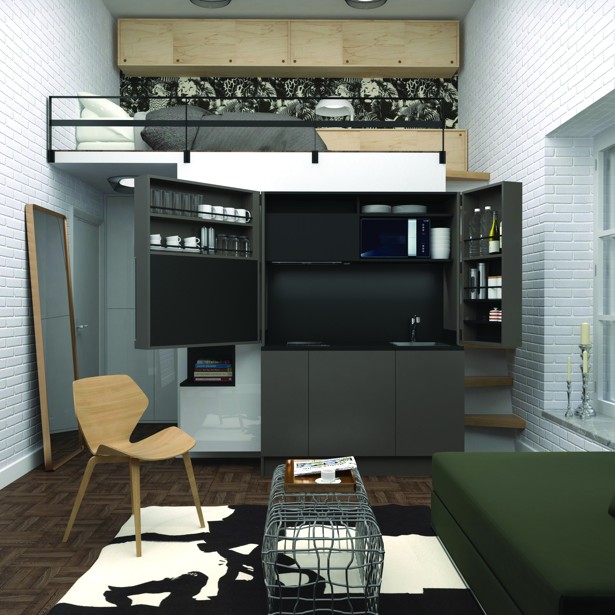
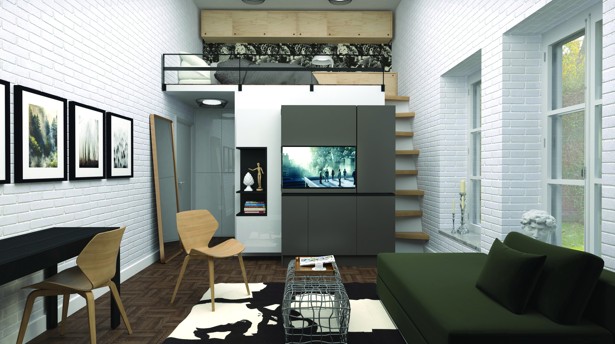
Each configuration can be preset, including preferred integrated lighting, so that one touch on the physical interface or on the corresponding app will morph the room, Behar adds.
The bed at the bottom of the unit glides out when needed – otherwise it stays tucked beneath a wardrobe. One side hides a desk for a home office; the other holds a media centre for entertaining.
With Wi-fi capabilities built in, the Ori system is compatible with smart home devices such as Amazon’s Alexa and Google Home, and can be operated remotely.
“Ask Alexa to make my bedroom, and the system moves automatically to the preset location,” says Hasier Larrea, founder and CEO of Ori, whose research on smart furniture while a project manager at the MIT Media Lab spawned the technology behind the system. Ori provides the furniture, and the user supplies a mattress, linen and accessories to personalise the look.
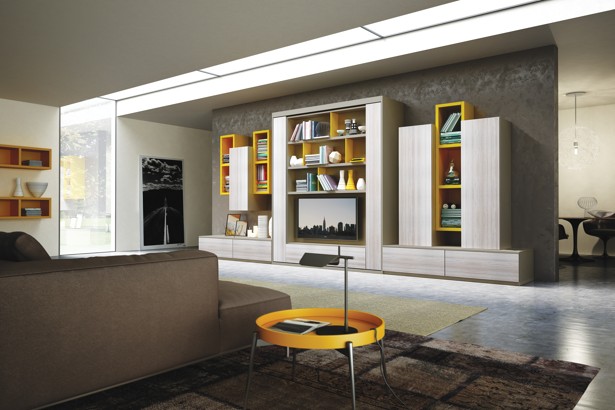
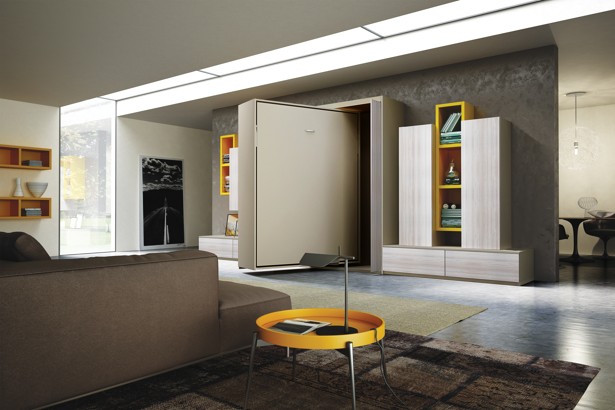
The cost of the system ranges from US$10,000 to US$16,000 and, in partnership with developers, is currently being introduced in a few selected metropolitan areas in the US, including the Greater Boston area, New York and Washington.
“We plan to roll out more cities in the US and Canada by the end of 2018 and throughout 2019,” Larrea says. “We think the Ori solution could be great in markets like Hong Kong, where apartments are getting smaller and smaller. We hope to be able to expand internationally soon.”
We would rather live in a small space and make it function well than live farther out in the suburbs and commute
Less hi-tech, but undeniably innovative, is the line of foldaway furniture created by two Canadian brothers who are now tapping the Hong Kong market.
When moving out from the family home to a flat of their own, Vancouver-based Adam and Jared Joubert found that their parents’ hand-me-down sofa overcrowded the smaller space. Under the brand Expand Furniture, they designed and made a wall bed/sofa combo, then added a revolving wall bed with dining table and television, as well as coffee tables that transform into dining tables, and more.
“We felt compelled to innovate for our own needs,” Adam Joubert says. “We would rather live in a small space and make it function well than live farther out in the suburbs and commute.”
They saw a similar trend in Hong Kong, where Adam explains that very few people have the space for dedicated dining tables and other furniture which only have one function.
“With multifunctional furniture, you don’t have to choose between a bed or a sofa when you can have both,” he says.
Ideal for renters, Expand Furniture’s range lets users convert their bedroom into an office (via the Hover wall bed desk) or the living area into a guest bedroom (via the MurphySofa). Need storage? The Reveal lifting bed has room for even bulky items, such as a suitcase.
“The furniture becomes even better when you add complementary products that are designed to work together,” Adam Joubert says. “For example, a MurphySofa [any variation] folds out to cover your coffee table, which converts to a 10-person dining table. You could either hide your folding Nano chairs into the sofa’s storage [if it is the MurphySofa Clean], hang them on the wall or put them in your Reveal lifting bed.
“With modular sofas such as the Soft cube, pieces can be arranged to sit across from your friends, or if you move into a bigger apartment you can add on an extra piece or two instead of buying a new sofa.”
Modern, high-quality, multifunctional furniture can “help you to live better in less space, so you can enjoy your city life more”, he adds.
Try living in a micro flat – interactive feature
All of Expand Furniture’s range can be shipped to Hong Kong, and is customisable; a white gloss console that converts to a dining table costs C$1,295 (US$990) for, and a wall bed/table combo costs around C$4,000.
Singapore company Spaceman is also making a move on Hong Kong’s tiny apartments, offering its Italian-designed, space-saving, multifunctional furniture at a new showroom in Ap Lei Chau.
“All products are highly customisable, with over tens of thousands of available combinations covering colour, textiles, frame sizes and functions to match existing interiors and each customer’s style,” says Matthew Levin, CEO of Spaceman.
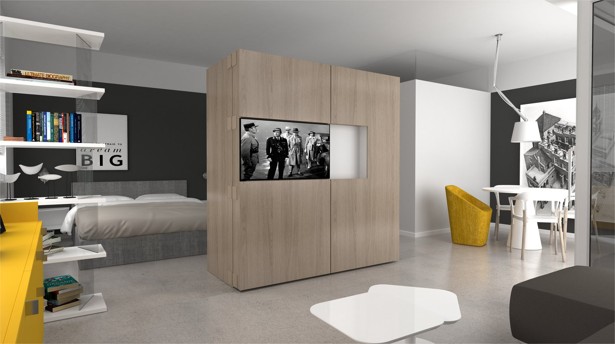
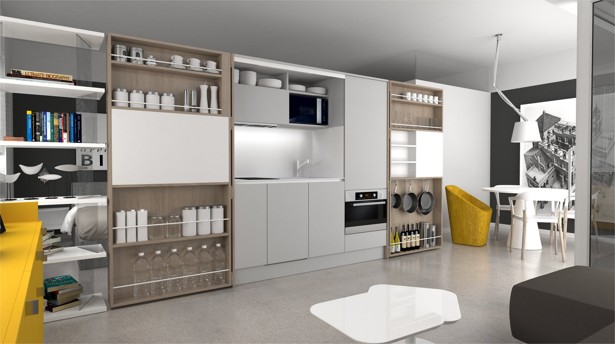
A living room can easily be transformed into a dining room with one of Spaceman’s wall-mounted dining tables, which can take the look of a wall mirror or piece of art. Similarly, a children’s bedroom can be designed to fit three bunk beds that can be collapsed against the wall during the day, providing a larger play area.
Spaceman’s multifunctional beds in particular have proven popular, Levin says. “These can be mounted on a wall or even the ceiling, and transformed into desks, dining tables, sofas, TV units and shelves. This philosophy of making a room work harder for you has inspired beautiful products that are quick and easy to operate, and most importantly, designed for everyday living.”
Spaceman’s consultancy service offers the option to design and build custom furniture to maximise home space based on a floor plan, showing how the finished flat will look via a 3D visual including all dimensions and finishes. Once approved, production will start, with custom pieces taking about three to four months to finish. Prices for an Italian-made multifunctional coffee/dining table start at HK$10,288 (US$1,300), and HK$12,290 for a bed, Levin says.
The pieces can be dismantled and installed in a new room or home at any time. Remote control is an option, Levin adds. “Just press a button and the bed opens or closes.”
How to choose long-lasting multifunctional furniture
Matthew Levin, CEO of Spaceman, gives these six tips:
1. Maintenance-free gas pistons make folding furniture a breeze. This makes them lighter and easier to lift than pieces with older systems, which often use springs or, in some cases, have no lifting assistance at all.
2. Opt for soft open/close systems, which will lengthen the life of the piece and protect the user from sudden openings.
3. Ensure all cabinetry is sealed (usually with melamine or wood veneer). It is important, especially with Hong Kong’s high humidity, that all sides of any panel are covered to protect from moisture.
8 Hong Kong nano flats that prove small can still be beautiful
4. Choose designs that can be dismantled and relocated when you move. Even wall beds, despite being fixed to the wall, should be able to be disconnected and reused.
5. Check the warranty: some wall beds come with a “cycle” warranty, which is based on the number of times it is opened. A year-based warranty is better.
6. When buying sofas, look for removable covers.

